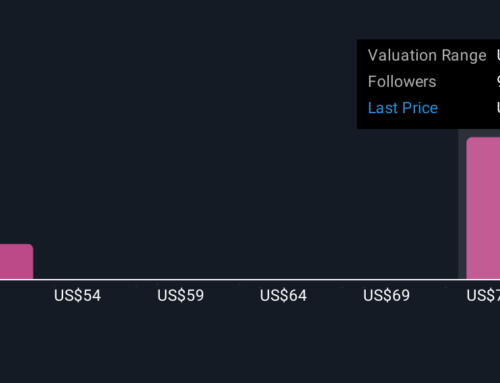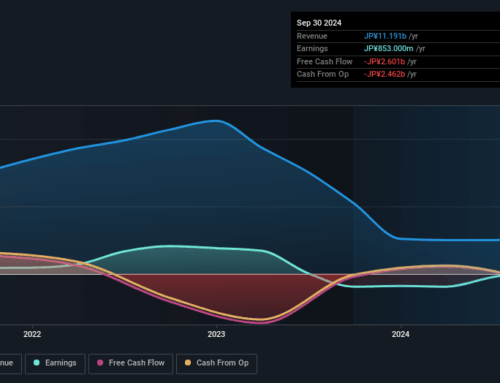The End of the Climate Hawk Era
October 9, 2025
Turn any article into a podcast. Upgrade now to start listening.

Welcome to Dispatch Energy! American energy politics, once an area of general bipartisan negotiation, has become dramatically polarized over the last decade or so. But rising energy costs, aging infrastructure, and skyrocketing demand driven by data centers and electrification will likely, at some point, force Congress out of the gridlock that so commonly characterizes these debates. Fortunately, despite appearances, there is a widespread bipartisan recognition of the need for investments in new energy technologies and reforms to old environmental laws.

As Philip Rossetti noted in the inaugural edition of this newsletter, policymakers at every level of government have been drawn to the subject of energy regulation. The permitting reform debates are fierce and high-stakes: Energy costs are rising in America, and recent fights over renewable energy subsidies, electric vehicles, and transmission policy have polarized energy politics in recent years. Constructive policy outcomes are far from assured.
But as contentious as today’s energy policy disputes are, they should be understood as an improvement on the deployment vs. innovation wars that divided clean energy advocates last decade.
On one side of those debates were those who insisted on deploying off-the-shelf clean energy solutions, like solar panels and wind turbines, arguing that climate change was too urgent a problem to rely on unproven technological innovations. This was framed as a zero-sum choice. “We have cost-effective technologies to stave off the worst impacts of climate change,” wrote clean energy entrepreneur Jigar Shah in 2013. “Yet, instead of focusing on deployment, many proven climate change solutions are gathering dust.”
On the other side were advocates who argued that these existing technologies were insufficient to the task of significantly reducing greenhouse gas emissions, and that innovations were needed in renewable energy, battery storage, nuclear power, carbon capture, industrial processes, transportation, and beyond. “Most governments, including the United States, have prioritized policies supporting regulation and subsidies over clean energy innovation policies,” energy analysts Matthew Stepp and Megan Nicholson wrote for the Information Technology and Innovation Foundation in 2013.
These debates surged in the early years of what I have called “the era of the climate hawk.” Over the course of the 2010s, climate change became a priority not just for progressives and Democrats in the United States, but for elites, elected officials, and executives all over the world. The question was not whether to prioritize climate action, but how to do so. Should we deploy existing technologies as fast as possible to meet the looming climate targets embraced by world leaders? Or should we invest in unproven technologies to expand the clean energy toolkit?
As someone whose sympathies leaned toward Camp Innovation, I nonetheless found these debates somewhat contrived. The deployment of emerging technologies, whether driven by markets or subsidies or both, is an important part of the broader process of innovation. But the notion of already having “all the technologies we need” was always nonsensical. Policies and investments to support both commercial and nascent technologies could and did co-exist.
And tellingly, the outcome of these knock-down, drag-out arguments was compromise, not zero-sum capitulation on either side. Solar, wind, and electric vehicle deployment rose steadily over the last decade, as did the cost of subsidizing these technologies. But investors and policymakers also redoubled support for next-generation technologies. The deployment vs. innovation wars ultimately delivered major victories to both factions. The 2021 Infrastructure Investment and Jobs Act and the 2022 Inflation Reduction Act poured hundreds of billions of dollars into both deployment subsidies and infrastructure and innovation investments. The rising tide of elite climate concern lifted all boats.
That debate, and its détente, may seem rather quaint today. The second Trump administration has dismantled many of the Biden-era energy policies, along with the raft of climate regulations and programs built up over the last generation. Republicans’ One Big Beautiful Bill Act repealed hundreds of billions in federal deployment subsidies for solar, wind, and electric vehicles. And while tax credits for next-generation technologies like nuclear and geothermal energy were extended, the Department of Energy has canceled innovation investments supporting hydrogen, carbon removal, batteries, and other nascent technologies. Meanwhile, the administration has walked back the regulations, scientific findings, and public reporting governing carbon emissions. The entire American federal climate and clean energy regime has been overturned.
But this phenomenon is much bigger than the influence of Donald Trump. After all, clean energy subsidies, public investments in innovation, and international climate ambitions rose during the first Trump administration. This time around, inflation, booming energy demand, and global supply chain disruptions have prompted more society-wide shifts in priorities. For consumers, investors, and elected officials, “net-zero” is out, and energy affordability is in.
Climate advocates are understandably troubled by these new circumstances, and by the Trump administration’s assault on energy and climate policy. But they should acknowledge a silver lining: the emergence of a new consensus on the need for both innovation and regulatory reform.
Republicans aren’t likely to create any substantial new clean energy policies over the next few years. But we shouldn’t expect Democrats to pass anything like the Inflation Reduction Act when they next gain power, either. Concerns about inflation and the federal debt are likely to persist for years to come, a marked shift from the economic circumstances that prevailed during the era of the climate hawk. Democrats also appear to have finally acknowledged that climate change is a low priority even for their own voters. Not only will there be no “IRA 2.0,” but it’s also unclear whether any future Democratic administration will reinstate the emissions reporting program and regulations pursued by the Obama and Biden administrations. There’s even a wellspring of old-school Democratic support for oil and gas development, as turbine and refinery capacity shortages drive energy prices up in blue states.
Meanwhile, the need for a wider portfolio of affordable energy technologies has become impossible to ignore. Solar, wind, and electric vehicles will continue to deepen market share despite a lack of federal subsidies. But increasingly few expect these technologies alone to overcome looming energy supply shortfalls, let alone to power entire energy systems later this century. Investor and policymaker enthusiasm for nuclear, geothermal, carbon removal, and other technologies has ticked up on the winds of electrification and data center expansion.
This new energy innovation push will require not just public and private investments in emerging technologies, but significant regulatory reforms. Fortunately, most players in the new energy abundance era understand that innovation investments and regulatory reform are not mutually exclusive.
The current government shutdown notwithstanding, Congress appears poised to take another shot at reforms to the National Environmental Policy Act (NEPA). Advocates of all stripes increasingly agree that NEPA obstructs the expansion of energy infrastructure and manufacturing. And it’s not just NEPA. Any congressional permitting deal is likely to include reforms of long-distance transmission planning and siting procedures. The Endangered Species Act, the Clean Water Act, the National Historic Preservation Act, the Jones Act, the General Mining Law, and a number of other federal statutes impose further regulatory barriers to energy supply and investment.
Then there are the technology-specific regulations. All the innovation and deployment dollars in the world won’t overcome outdated reactor licensing and radiological health regulations overseen by the Nuclear Regulatory Commission. Any future for large-scale carbon removal will involve so-called “Class VI” wells, specially engineered repositories that currently require a cumbersome EPA classification process for geologic storage of carbon dioxide. Bureau of Land Management leasing procedures will make or break many enhanced geothermal projects in the coming decades. Even more mature energy technologies—like solar, wind, electric vehicles, and oil and gas—would benefit from regulatory relief.
And these regulatory reforms are not an alternative to subsidies or demonstration programs for new technologies, but rather necessary preconditions for the commercialization component of the broader innovation process. The climate hawks’ era may be over, but so too are their pitched, contrived battles over deployment vs. innovation. All parties should be able to agree: Achieving energy abundance will require both innovation and regulatory reform.
A message from Pacific Legal Foundation
The environmental case that changed everything
Picture this: It’s 2007. The first iPhone was just released. You start building your new home in Idaho, across the street from a lake. But EPA officials halt construction: They claim your property is a federally protected wetland—even though the land is, quite literally, dry. This is how the 16-year legal saga of Sackett v. EPA began. It ended with a historic Supreme Court ruling that lifted red tape for property owners around the country.
- The U.S. Court of Appeals for the District of Columbia Circuit recently dismissed a lawsuit filed by the Sierra Club against the Federal Energy Regulatory Commission (FERC). The litigants alleged that FERC erred in its finding that a proposed new natural gas pipeline satisfied NEPA’s requirements. In his majority opinion, Judge Justin Walker affirmed the Supreme Court’s decision in Seven County Infrastructure Coalition v. Eagle County, Colorado, which limited the scope of judicial review under NEPA. Walker called Seven County a “course correction,” indicating a new doctrine for federal NEPA jurisprudence that could ease regulatory barriers to new infrastructure projects.
- The Department of Energy this month announced more than $7 billion in cuts to hundreds of clean energy grants awarded during the Biden administration, spanning renewable energy, grid resilience, carbon removal, hydrogen, and other sectors. The legally dubious cuts, which affected congressionally authorized funding, are unlikely to improve the state of bipartisan negotiations on permitting reform and other energy policy questions.
- The Senate Environment and Public Works Committee on Wednesday held a confirmation hearing for Ho Nieh, a longtime Nuclear Regulatory Commission (NRC) staffer and Trump’s pick to fill an open seat on the commission. Nieh boasts an impeccable resume for the position and has been a persistent voice for NRC modernization, which has become a bipartisan priority in recent years. Nieh’s nomination will be a “test for Congress,” wrote the Breakthrough Institute’s Ted Nordhaus in the Ecomodernist. “If competence, independent judgement, technical merit, a deep knowledge of how America’s nuclear regulatory bureaucracy presently operates, and of how it needs to change, matters at all, the Senate will confirm Nieh by a large, bipartisan majority.”
- The Department of Energy recently announced its new Reactor Pilot Program, which will develop test prototypes of advanced nuclear reactors for operation in DOE facilities in the coming months. Enabling this prototyping phase is an important step in the demonstration, licensing, and commercialization of next-generation nuclear technologies. Four American nuclear startups—Oklo, Terrestrial Energy, TRISO-X, and Valar Atomics—were selected for the pilot program. The companies will cover the costs of reactor construction, demonstration, and decommissioning under the program, which is intended to save money overall by streamlining the reactor licensing pathway.
- Large corporate energy customers are revising their voluntary framework for achieving emissions reductions in their operations and supply chains. Some players, like Amazon and Meta, have advocated for the continued use of renewable energy offset certificates, enabling them to use fossil fuel-generated electricity from the grid while claiming to operate on 100 percent low-carbon power. Fortunately, other corporations like Google and Microsoft are advocating for a more rigorous accounting system, which would require large customers to verify that they are using clean electricity generated at the same time and in the same region as their operations. Doing so would bring more integrity to the corporate sustainability space, and demonstrate how 100 percent zero-carbon operations can actually work in a physical, not just accounting, sense.
- Meet the new environmentalists: They’re not so different from the old environmentalists. Matt Yglesias got his hands on the League of Conservation Voters’ latest questionnaire for members of Congress seeking the group’s endorsement, and anyone hoping for a more forward-looking environmental movement had to be disappointed to read it. The questionnaire endorses the same tired policy positions, including opposition to nuclear energy and carbon capture and support for strengthening, not reforming, major federal environmental regulations. As Yglesias wrote in his Substack Slow Boring, “L.C.V. has not changed any of its substantive commitments, which I suppose is understandable if they truly don’t think they should. But they haven’t even made tactical adjustments about the wisdom of making candidates compete in this kind of checklist-a-thon. And to be clear, though this is just one organization, it’s an important one; L.C.V.’s constellation of PACs spent upwards of $150 million on the 2024 election.”
- Writing for the New York Times, science columnist David Wallace-Wells penned a eulogy for the climate politics of the 2010s, noting that world leaders have turned their attention to other issues like artificial intelligence and increasingly tense geopolitics. “In certain ways, the story is one that moderates and skeptics long predicted: that decarbonization could not be reliably imposed from above on moralistic terms and would have to be powered instead by market forces, private investment and the informed consensus of a price-conscious public,” he wrote. “These are familiar and somewhat simplistic neoliberal bromides, and if they now look prophetic, it is also a strange kind of prophecy: Global policymakers may be leaving climate increasingly to markets, but they are doing so even as in other realms they are embracing a new language of muscular state capacity and interventionist industrial policy.”
A message from Pacific Legal Foundation
Pacific Legal Foundation has been fighting for freedom since 1973. We sue the government on behalf of farmers, fishermen, teachers, nurses, and entrepreneurs—Americans from every corner of the country and from every walk of life—and we win.
Search
RECENT PRESS RELEASES
Related Post




